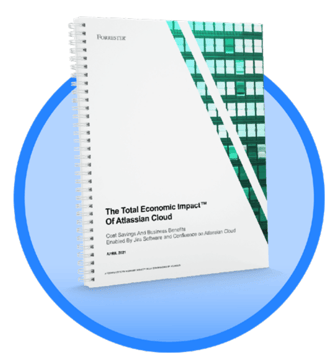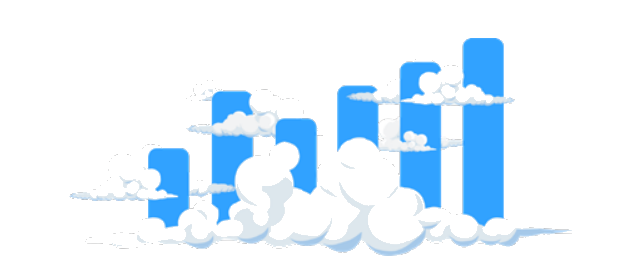TECHNOLOGY INTEGRATIONS
& PARTNERSHIPS
- Atlassian
- AWS
- Appfire
- Tempo
- Carahsoft
- ...and more!
Migrating to Atlassian Cloud can be a complex undertaking, particularly if your instance is large, if you have multiple instances, or if you need to bring over large amounts of data. While your organization could go it alone, most companies benefit from working with a trusted Atlassian migration partner who brings years of expertise and experience to the table. An Atlassian partner can serve as a trusted advisor, helping organizations configure their Atlassian tools to align with their long-term strategic business objectives. A partner can also streamline the migration process significantly, often using proprietary tools to speed up the process and ensure no data is lost.
When considering upfront migration costs, the following is a high-level overview of the migration services an Atlassian partner can provide:
Atlassian tools often develop organically, with individual divisions, departments, and teams developing divergent processes over time. Based on best practices informed by years of experience with organizations of all types and sizes, as well as your own organization’s unique ways of working, an Atlassian partner can provide strategic guidance and architecture development to ensure your new Cloud instance is optimized for your processes and aligned to your long-term strategic goals. This ensures it will serve your organization well in the present and scale to meet your future needs.
Actual data migration is the most complex and high-risk part of any migration—there are any number of things that can go wrong and result in data loss or costly delays. During this phase of the process, an Atlassian partner will configure your Cloud instance, map your existing data from the source environment to the destination environment, structure it in Atlassian-ready formats, and physically migrate it, using both Atlassian and proprietary tools. The partner can bring over both active data, as well as historical data required for compliance or other reasons.
Additionally, third-party app data migration can add a lot of risk and complexity to a Cloud migration. A partner can assist with custom scripting and automation to ensure as much app data is migrated as possible, while recommending similar Cloud apps for ones that don’t have Cloud versions.
This process is highly iterative, and companies can expect trial runs before the final production cutover. Before the cutover to production, there will also be rounds of validation and user acceptance testing to ensure that all necessary data has been brought over correctly.
For most organizations that rely on Atlassian, the tools are more than nice to have—they are business critical. Because of this, many companies have teams of in-house administrators with substantial knowledge of how the tools work, the architecture of their own instance, and their own processes and user needs. Why then, is it necessary to work with a migration partner? What value do they add?
Migrations are not everyday occurrences, and in-house Atlassian administrators may have limited experience in architecting a comprehensive solution, the ins and outs of Cloud, and the highly specialized tools and processes necessary to migrate data. The everyday demands of their jobs and lengthy, convoluted process of learning through trial and error could result in costly, disruptive delays. Lack of experience with migration tools and processes could mean critical data gets deleted or left behind, or that the final cutover causes costly, disruptive, and unnecessary downtime.
Conversely, an Atlassian migration partner has worked through the process dozens, perhaps hundreds, of times. They can architect a solution that will serve the long-term needs of the business, identify and avoid potential pitfalls, and ensure a timely, successful migration with all data intact. That said, in-house Atlassian administrators can and should play a critical role in the migration. With their deep knowledge of the organization’s users, configurations, and processes, they are essential counterparts to Atlassian migration partners.
The upfront costs associated with migration to Atlassian Cloud can be substantial, and certainly they need to be planned and budgeted for, but they are only part of the equation. Organizations planning a move would do well to consider the total cost of ownership of migrating—the upfront costs relative to the long-term, quantifiable savings and other non-quantifiable economic benefits of investing in Cloud.
The total cost of ownership, including both the hard costs related to migration and the savings incurred post-migration, will of course vary broadly from organization to organization. Whichever Atlassian partner you choose to assist with the migration should provide a detailed estimate for their services (as outlined in Section 1 of this paper) based on your organization’s needs. Atlassian has some excellent tools on its website to help companies estimate Cloud licensing fees. In addition, at Isos Technology, we make it a practice to provide a Total Cost of Ownership Analysis as part of our estimation process. This helps our clients gauge what their expenses related to Atlassian may be for the first few years after the migration, as well as gauge when they might begin realizing a return on investment.
In Section 3 of this paper, we will explore a Forrester report that provides hard numbers demonstrating how a hypothetical enterprise organization—a composite of four real companies—was able to achieve 155% ROI and $1.79M in savings with a payback period of only 6 months by migrating to Atlassian Cloud. Before we get there, however, we thought it would be helpful to explain several key concepts related to total cost of ownership.
To help organizations better understand how— and how much—they stand to gain financially by migrating to Cloud, Atlassian commissioned Forrester to conduct an economic impact study. The results of the study were published in a report titled The Total Economic Impact of Atlassian Cloud.
The study was specifically designed to help organizations evaluate the potential return on investment (ROI) from deploying Jira Software and Confluence on Atlassian Cloud. Forrester interviewed four different Atlassian customers that had done just that, and created a composite organization called “Laud Jeans” based on the characteristics of the companies they evaluated. Laud Jeans represents a company with $5B in revenue, 33,000 employees, 100 teams, and 750 initial users. The composite was constructed so that the user base represented both the large retail organization and the mid-size technology companies that participated in the study.

The study found that by deploying Jira Software and Confluence on Atlassian Cloud, Laud Jeans was able to achieve a 155% return on investment and $1.79M in savings over the course of three years with a payback period of only 6 months.
In calculating the investment in Atlassian Cloud, the study took the following into account:
Laud Jeans’ key areas where savings were achieved include:
In addition to the quantifiable benefits outlined above, the study identified non-quantifiable benefits associated with the implementation of a software-as-a-service (SaaS) solution, including scalability, consistency, and quality of upgrades. In fact, one participating organization saw a 90% reduction in the submission of support tickets related to the tools, while time to resolve the remaining tickets decreased by 38%.
If your organization is considering migrating to Atlassian Cloud, and you need to make a business case for the change, this report is worth reading in detail. Download The Total Economic Impact of Atlassian Cloud to learn more.
The Forrester Report described in Section 3 of this paper, The Total Economic Impact of Atlassian Cloud, definitely demonstrates that organizations can realize significant cost efficiencies by migrating to Atlassian Cloud. In this section, we will take a more in-depth look at those areas where cost savings might be achieved.

If you are considering a migration from Server or Data Center to Atlassian Cloud, looking to merge multiple instances in Cloud, or want to rightsize your current Atlassian Cloud instance, we encourage you to reach out to us. We understand that no organization’s needs are the same—our team of experts can provide the strategic guidance necessary to align your Cloud instance with your long-term business strategy, architect your system, clean up your instance, migrate your data using Atlassian and proprietary tools, and train your admins and users to be up-and-running on day one.
Isos Technology is an Atlassian Platinum Solution Partner with a Cloud specialization, Atlassian 2019 Partner of the Year: Enterprise, and Atlassian 2020 Partner of the Year: ITSM. We are exclusively focused on implementing and optimizing Atlassian tools. The reason for our passion? We use them ourselves, every day, and have since 2005.